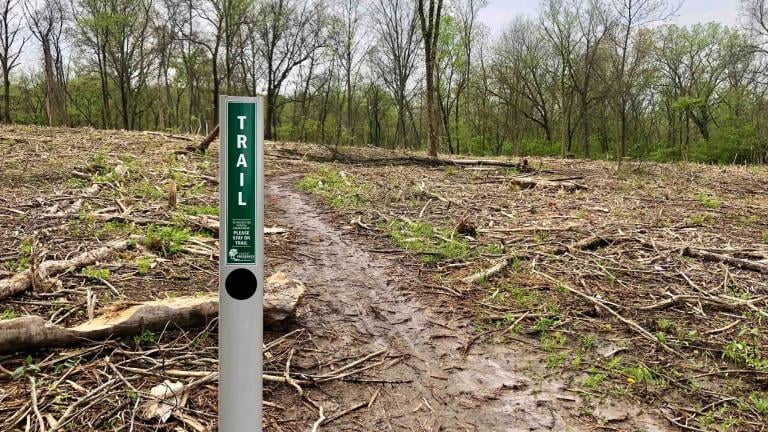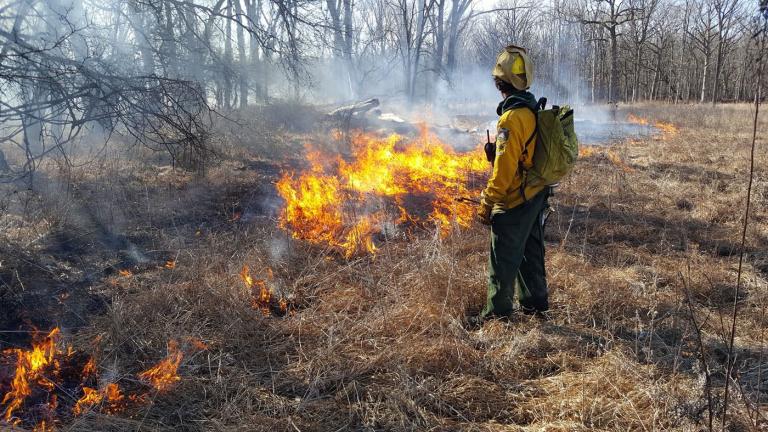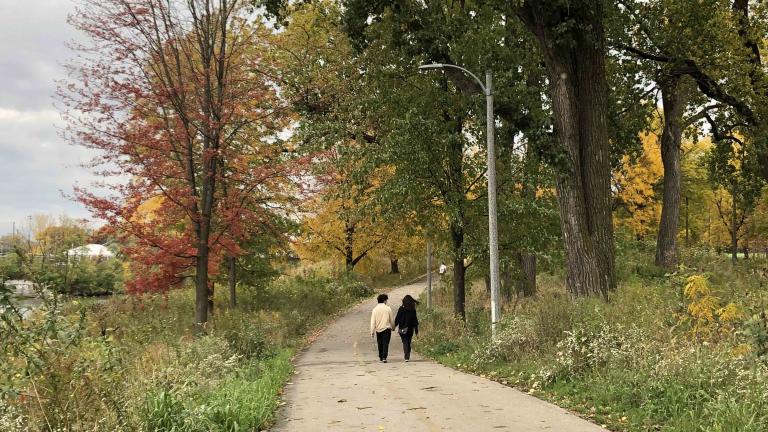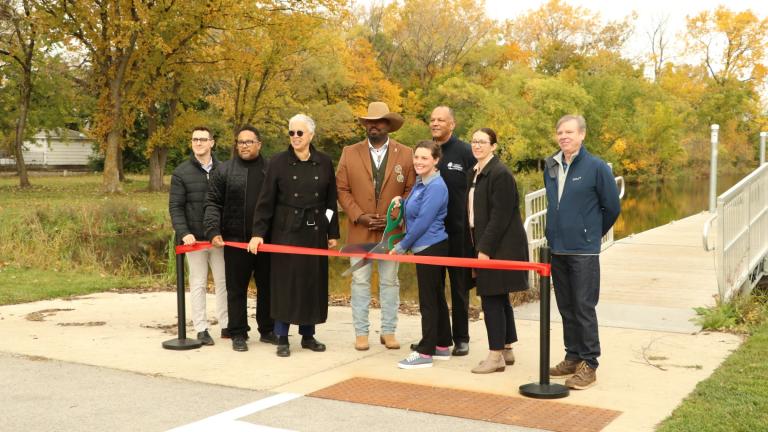Chris Anchor is still talking about that one time he was summoned downtown for jury duty, not because of anything that happened in the courtroom but because of what he saw on the way there.
After taking the train into Union Station, he joined the stream of commuters heading east toward the Loop. As he walked across the Chicago River, Anchor glanced down from the bridge, spotted something in the water below and stopped. There, surrounded by a mess of carp scales, plain as day, was an otter.
“There were literally hundreds and hundreds of people around, and nobody else saw it,” Anchor said.
It helps that Anchor, a longtime wildlife biologist with the Forest Preserve District of Cook County, recognized what he was looking at, but his fellow Chicagoans could be forgiven for not having otter on the brain. For the longest time, it was assumed water quality was too poor for the critters to survive in the Chicago area.
That’s changed of late, and Anchor recently secured grant funding to kick off the Urban River Otter Research Project in Cook County, a companion to a similar study of urban coyotes. One of the early goals of the project is to gather otter sightings from the public in order to get a sense of the extent of the animal’s presence in and around Chicago.
“How many are out there? We really don’t know,” Anchor said.
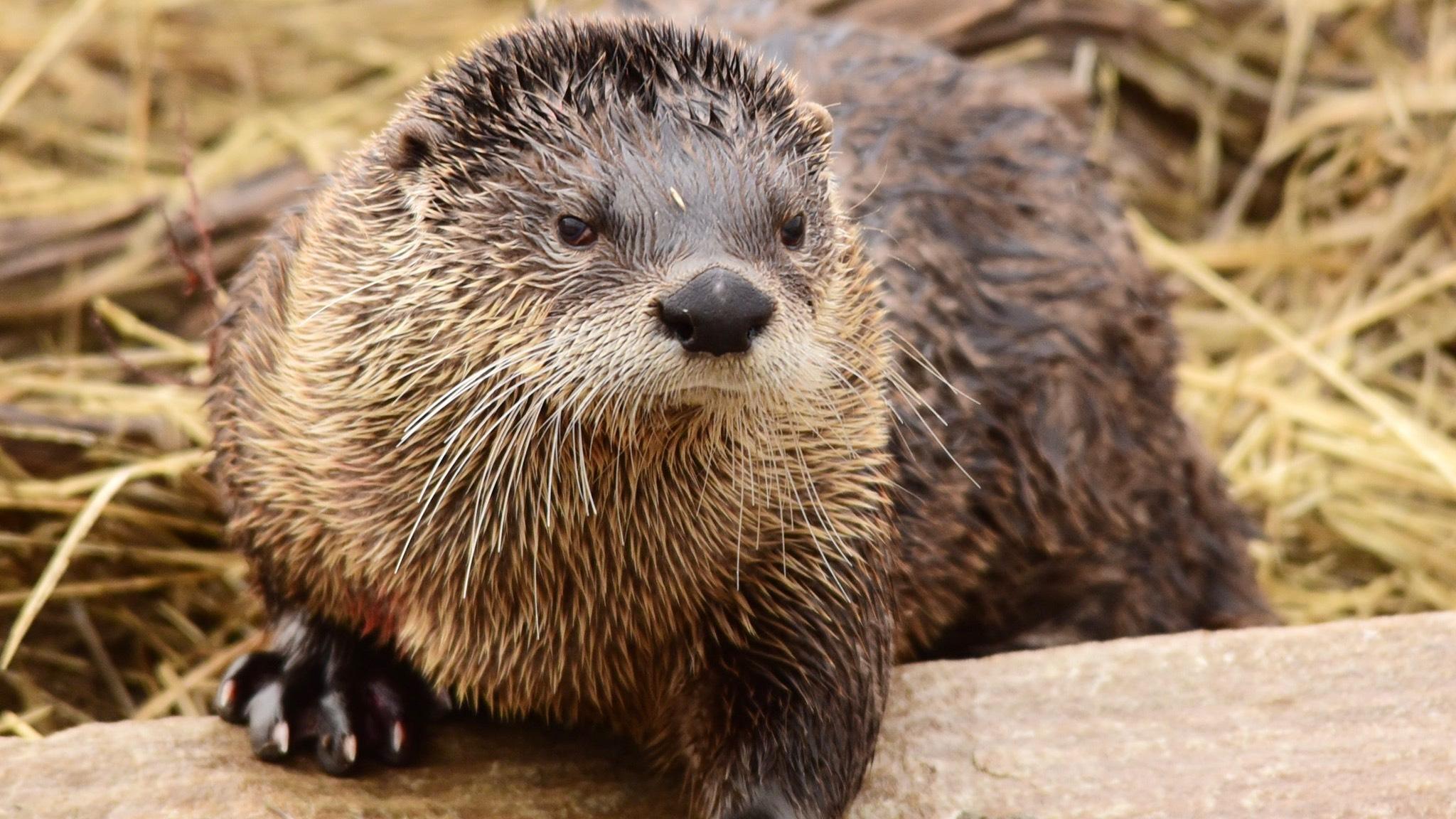 River otters love to eat fish, consuming two to three pounds a day. (Tom Koerner / U.S. Fish and Wildlife Service)
River otters love to eat fish, consuming two to three pounds a day. (Tom Koerner / U.S. Fish and Wildlife Service)
North American river otters (lontra canadensis) are found in nearly every state in the U.S. except the Southwest. Though they’re the most naturally abundant otter species, river otters’ prized pelts caused them to be hunted to near extinction in parts of the Midwest. By 1989, wildlife officials estimated only 100 rivers otters were left in Illinois.
In the 1990s, the Illinois Department of Natural Resources relocated 346 river otters from Louisiana and Kentucky, setting them loose at 15 sites along the Illinois, Kaskaskia and Wabash river basins. The effort was a success, and the population, once listed as state endangered, is no longer even considered threatened.
“River otters are one of the greatest predator reintroduction stories in the U.S. They’re a great underdog story,” said Zach Hahn.
Hahn is a graduate student at Ohio State University, which is one of the institutional partners in the otter research project, along with the forest preserve district, the Cook County Department of Animal and Rabies Control, and the Max McGraw Wildlife Foundation. He arrived in Chicago at the beginning of January for a two-year stint during which he will basically live and breath river otters as the project’s dedicated researcher.
It’s a bit of a departure from the study of big cats in Africa, which is what originally drew Hahn to wildlife research, but otters have an undeniable charm, he said.
“Overwhelmingly, when I say ‘river otters,’ people get a spark in their eyes and say, ‘Tell me more,’” Hahn said.
He’ll be building on work that Anchor, in conjunction with the Brookfield Zoo, undertook seven or eight years ago, tracking half a dozen otters outfitted with transmitters. (You can also follow an otter’s path by listening to dogs go crazy when the critter passes by, Anchor said.)
“In the course of other projects, I’d notice otter signs,” Anchor said. “We’re given the authority to leverage opportunity, to take advantage of it.”
Among the fascinating discoveries Anchor has made: River otters have an amazing ability to “map” retention ponds, moving from pond to pond like a milk run.
And they truly are an urban animal, Anchor said. “We had one otter, he had calluses on his feet from running in the streets.”
Though the tracking effort lost momentum during the pandemic, Anchor’s early findings attracted enough interest to create a full-blown urban otters project. With Hahn now on board, job one is to find more otters.
 A camera trap at Crab Orchard National Wildlife Refuge in Illinois caught this otter performing a classic belly slide in 2014. (U.S. Fish and Wildlife Service)
A camera trap at Crab Orchard National Wildlife Refuge in Illinois caught this otter performing a classic belly slide in 2014. (U.S. Fish and Wildlife Service)
Chicago is 150 miles from the nearest place where otters were reintroduced in Illinois. The fact that they’ve ventured into Cook County is a sign of their successful recovery, the availability of a steady supply of fish and the health of the region’s rivers.
Otters are notoriously sensitive to polluted water. “If river otters are in an area, that’s a great sign the water’s improving,” Hahn said. “In general, they’re considered a ‘sentinel’ species that humans can look at to determine environmental health.”
The first otter Anchor ever tagged was found near the Sand Ridge Nature Center, in the southeast corner of Cook County. Others were discovered in Lemont, Barrington and the Palos area. That’s a lot of territory for Hahn to cover as he searches for research subjects.
Though they have a reputation for being playful, river otters are also secretive and reclusive, so Hahn has been honing his tracking skills, looking for paw prints in the snow, as well as evidence of an otter’s telltale belly slides. He’s placed camera traps near targeted waterways in forest preserves and is methodically examining shoreline sections for potential shelter sites and otter latrines, though he’s more likely to catch a whiff of the latter before he sees it.
Latrines, he explained, are usually situated within 10 meters of water and are strewn with otter scat, which is characterized by fish scales and “a smell you won't forget.”
The latrines, Hahn said, are kind of like a message board, used by multiple otters to signal their presence to each other.
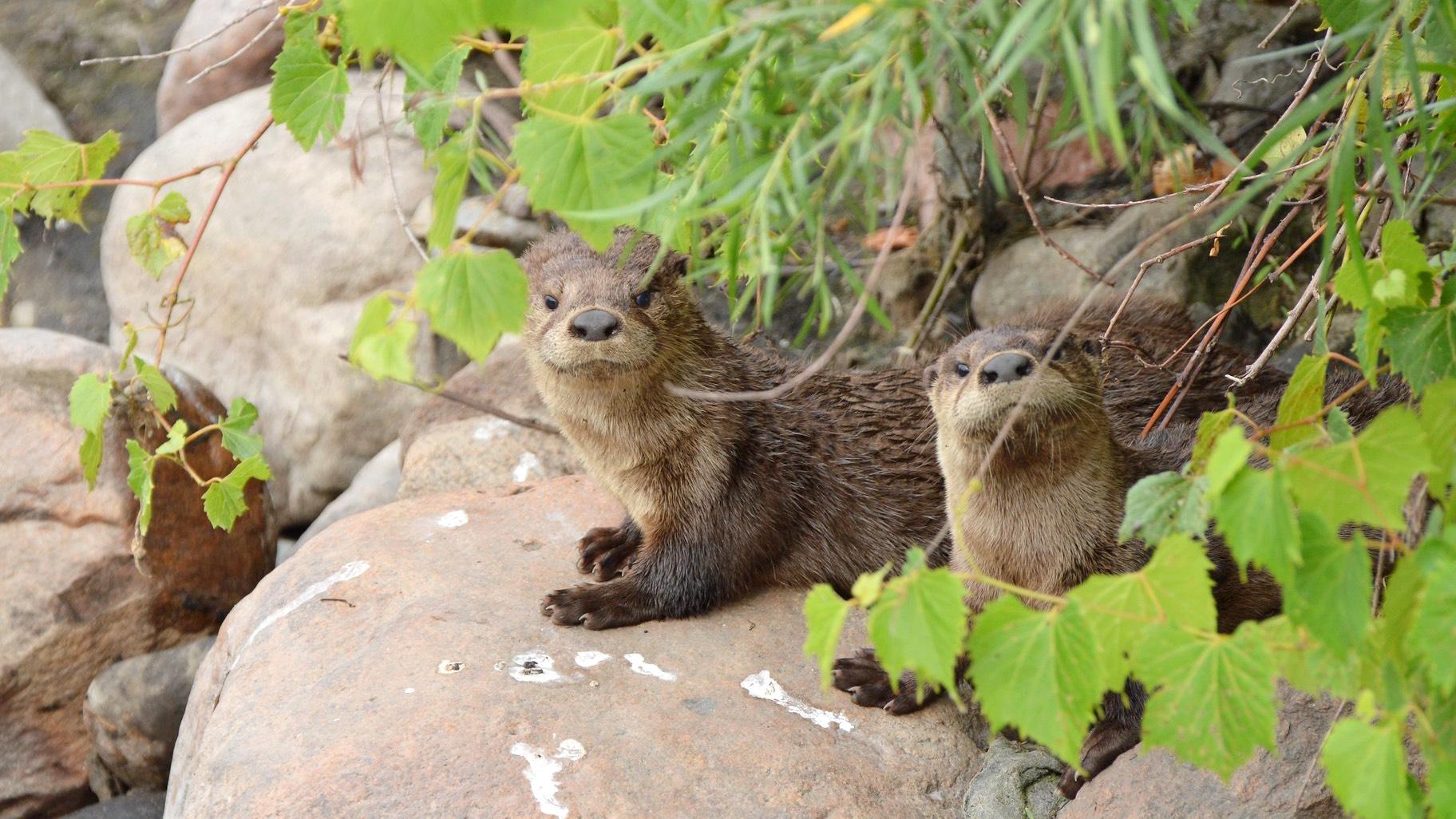 Otters don't create their own dens, instead they find holes made by other animals. They're so opportunistic and adaptable, they've been found living in viaducts and even an abandoned bathhouse in San Franscisco. (Kris Speath / U.S. Fish and Wildlife Service)
Otters don't create their own dens, instead they find holes made by other animals. They're so opportunistic and adaptable, they've been found living in viaducts and even an abandoned bathhouse in San Franscisco. (Kris Speath / U.S. Fish and Wildlife Service)
Once enough otters have been identified, the next phase of the research project will be to follow their movements and gain insights into their behavior. How vast or constricted is their range? Are there certain areas they prefer or avoid? What are they eating? Is anything having a negative impact on their health?
“Our goal is to find out how they’re adapting,” said Hahn. “How are they learning to make it work?”
To date, most of the peer-reviewed research on otters has been conducted in rural areas. In urban areas, observed patterns can be 180 degrees different, Anchor said, and those shifts need to be noted.
For example, otters are usually obvious about where they live, he said. There are the aforementioned open latrines and they also are messy eaters, leaving behind fish bones and scales or piles of clam shells. That should make them easy to find, Anchor said, but the opposite proved to be true back when he was conducting his original research.
It turned out, coyotes were swooping in behind the otters and gobbling up any leftovers, erasing evidence, he said.
It's important to understand those interactions, Anchor said, whether for habitat management or tracing how diseases might pass from one species to another, including humans.
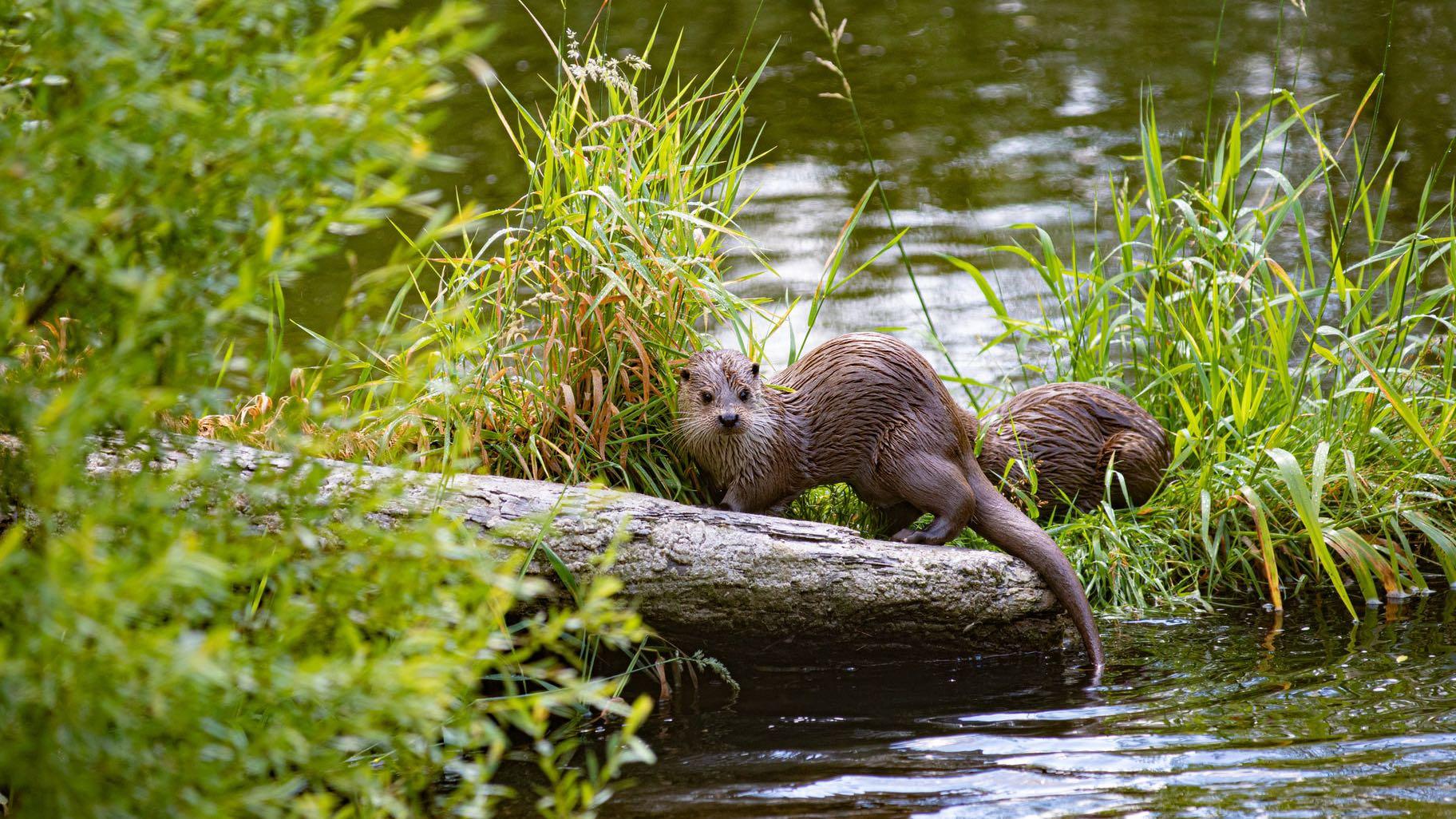 Otters are often confused with beavers and muskrats. Otters are the far superior swimmers, built for speed. Their small ears don't protrude, so as to decrease drag in the water. (Andreas Schantl / Unsplash)
Otters are often confused with beavers and muskrats. Otters are the far superior swimmers, built for speed. Their small ears don't protrude, so as to decrease drag in the water. (Andreas Schantl / Unsplash)
To aid with his research, Hahn has put out a call for the public to share otter sightings. There’s a simple survey form people can fill out and he’s already received hits from the Palos area, Evanston, Lemont and Itasca. There’s an option to include a photo, which will help Hahn confirm the animal in question is indeed an otter and not a beaver or muskrat, with which it’s often confused.
Some simple ways to tell the three creatures apart are to get a good look at their tails and relative size:
— Beavers have a large paddle-like tail, are the biggest of the three at 40-60 pounds, and are the slowest swimmers. Signs of gnawed trees are another good indicator a beaver’s in the neighborhood, but you can’t rule out otters, because otters tend to move in on beaver dams — “They love free real estate,” Hahn said.
— Otters are longer, leaner, more agile and faster swimmers. Their sleek, streamlined body, with a long, rounded tail, is quite a contrast to the beaver’s rounder, less athletic build. Otters are also noisier — yelping and barking — and messier. Remember, these carnivores don’t clean up after meals, scattering bones and shells, whereas beavers are herbivores.
— Muskrats are the smallest of the bunch, just two to four pounds. Their long rat-like tail is another giveaway.
For those who do encounter an otter, Hahn has one piece of advice: “Yes, they’re very charismatic and cute. Just remember, it’s a wild animal. They’re fighters, they have moxie. Don’t try to pet it.”
Follow the project’s progress on Facebook, Twitter and Instagram.
What a catch! This river otter pulled a bowfin out of the water at Muscatatuck National Wildlife Refuge in Indiana. Have you seen any otters lately? Photo courtesy of Clare Bozell. pic.twitter.com/ayXbeiFD2E
— U.S. Fish and Wildlife (@USFWS) February 8, 2022
Note: This story was originally published Feb. 22. It has been updated to include our “Chicago Tonight” conversation.
Contact Patty Wetli: @pattywetli | (773) 509-5623 | [email protected]

